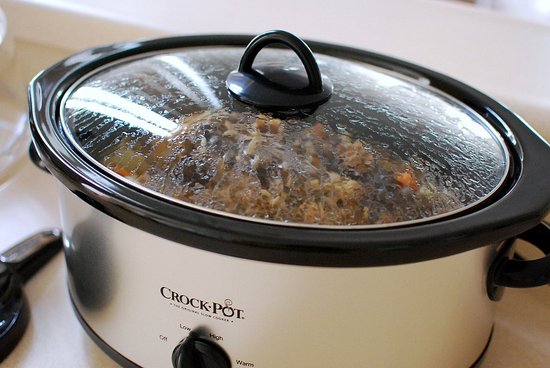This recipe is by J. Kenji Lopez-Alt, Managing Culinary Director of Serious Eats. He prefaces it with this note: "This makes for a moderately hot to hot chili. You can vary the heat by adding or removing the hot chilies and the canned chipotles."
About This Recipe
Yield: 6 to 8
Active Time: 45 minutes
Total Time: 3 hours
Real Texas Chili Con Carne
Ingredients
3 whole sweet fresh dried chilies like Costeno, New Mexico, or Choricero,
stems and seeds removed
2 small hot dried chilies like Arbol or Cascabel,
stems and seeds removed
2 whole Chipotle dried chilies canned in adobo sauce, plus 2 Tbsp sauce,
stems and seeds removed
3 whole rich fruity dried chilies like Ancho, Mulatto, Negro, or Pasilla,
stems and seeds removed
2 quarts low sodium canned or homemade chicken broth
4 pounds beef chuck, trimmed of excess gristle and fat,
cut into 2 inch chunks
Kosher salt and freshly ground black pepper
2 Tbsp vegetable oil
1 large onion, finely diced
4 medium cloves garlic, grated on a microplane grater
1/2 tsp powdered cinnamon
1 Tbsp ground cumin
1/2 tsp ground allspice
2 tsp dried oregano
2 to 3 Tbsp masa
Procedures
1. Combine all chilies in a medium saucepan and add half of the chicken broth. Simmer over medium-high heat until chilies are completely tender, about 15 minutes. Transfer to a blender or hand blender and blend until completely smooth.
2. Heat oil in a large heavy-bottomed Dutch oven over high heat until smoking. Season half of meat with salt and pepper and cook without moving until well-browned on bottom side, about 6 minutes. Transfer meat to a large bowl and combine with remaining un-cooked half of meat and set aside. Return Dutch oven to heat. Add onions and cook, stirring frequently until translucent and softened, about 2 minutes. Add garlic, cinnamon, cumin, allspice, and oregano, and cook, stirring constantly until fragrant, about 1 minute. Add all meat back to pan along with chili puree and remaining quart chicken broth. Stir to combine.
3. Bring to a boil over high heat, reduce to simmer, cover, leaving lid just barely ajar and cook, stirring occasionally until meat is completely tender, 2 1/2 to 3 hours. Alternatively, stew can be cooked in a 200F to 250F oven with the lid of the Dutch oven slightly ajar.
4. Season liquid to taste with salt and pepper and whisk in masa in a slow steady stream until desired thickness is reached. For best results, allow chili to cool overnight and reheat the next day to serve.
5. Serve, garnished with cilantro, chopped onions, scallions, grated cheese, avocado, and warm tortillas as desired.
























